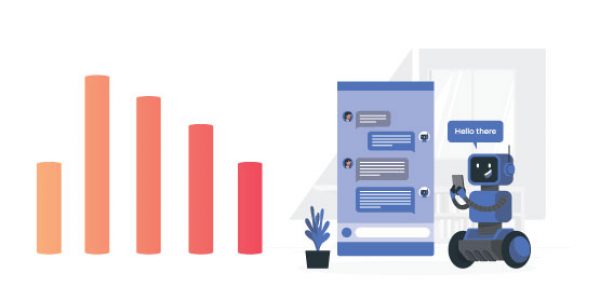How you can stop your marketing conversions slipping through the cracks and bouncing to your competitors.
The digital world is changing – what an understatement. If it wasn’t moving fast enough, 2020 has sped up digitization by somewhere between a few months based on KPMG’s “Has the COVID-19 pandemic sped up digital transformation in your organization?”

to nearly six years (Twilio’s study on digital acceleration).
“Twilio Study Finds COVID-19 Accelerated Companies’ Digital Communications Strategy by 5.3 Years”
And when Statistica asked 2569 enterprise decision makes “Has the COVID-19 pandemic sped up digital transformation in your organization?”

An overwhelming 97% of respondents stated that the digital transformation process had sped up in their organizations.
Given the increased online competition that 2020 forced upon us all, UX and CRO should be two top focuses for any business that relies on their website for revenue – whether that be B2B lead generation or revenue via ecommerce, with so much more competition, and the cost of getting good quality prospects to your website increasing, you need to make sure you are staying ahead of the game and extracting every possible return from all digital investments.
In fact the biggest opportunity that I see currently with Live Chat is the opportunity to stop conversions slipping through the cracks and bouncing to your competitors.
During the past few months, we have been quietly reviewing a large number (5006 to be precise) of websites to see if they have upped their game in terms of UX and CRO with LiveChat – including Chatbots.
The findings are quite surprising, and we save the best for last…… Shhh B2H is the new B2B
What Were We Looking For?
Our aim was to determine the level of adoption of the various types of LiveChat / Chatbots available to website owners:
In no apparent order:
- No Chat – these website had no presence of any kind of live chat interaction – bot or person.
- Bot – In these cases, the bot was running solo – and was the only option for immediacy in conversation.
- Manned Chat – A real live human being was available on these site at the time we visited them. We did not test to see what the hours coverage was. The fact there was a human there was a big bonus!
- Bot -> Agent – When a Chabot offered the option to find a real person, we took it! In this case, there was a human there to talk to.
- Unmanned Chat – represents websites that have LiveChat software loaded and active on the site but there was no-one to talk to. In some cases there was a “leave a message” type message, in some cases we just said hello and waited while no-one responded…
- Bot -> Unmanned Chat – This is where the Chatbot offered the option to hand over to a real human being but there was no-one there…
And The Findings:
 E-commerce has it all over B2B!
E-commerce has it all over B2B!
Our random sample included 14% ecommerce sites and 86% B2B sites and demonstrated the level of adoption of Live Chat by stream is way out of balance.
Of the sample, the adoption by e-commerce sites far outranks B2B sites at 54% to 46%! Is that what you expected?
But wait, there’s more…
Are Chatbots Even Harder Than They Look?
The most surprising result for us is the lack of adoption of stand-alone Chatbots by e-commerce.
 The e-commerce environment is one of the easiest to program a bot and has the highest marketing budget (resources to manage the Chatbot). Given the lower “sale value” or “lifetime client value” in B2C we expected to see Chatbots reign supreme here.
The e-commerce environment is one of the easiest to program a bot and has the highest marketing budget (resources to manage the Chatbot). Given the lower “sale value” or “lifetime client value” in B2C we expected to see Chatbots reign supreme here.
But that was not the case with B2C only accounting for 35% of the stand-alone Chatbots that we encountered.
Don’t they work? Are they too hard to program?
And why, given the higher value of the clients in B2B, has B2B adopted the standalone Chatbot at a much higher rate – are they still in catch-up mode?
Perhaps the B2C dominance of human supported Chatbot explains everything…
E-Commerce have been the early adopters of live chat in all its forms.

Given the lower “sale value” or “lifetime client value” in B2C it is the natural home of low cost and low effort Chatbots to support increase website conversions.
However, E-commerce do not seem to have been able to rely solely on stand-alone bots with the evidence showing a whopping 60% adoption of bot to human hand-off compared to only 40% for B2B.
Given the advanced stage of development of the B2C E-commerce sector, the indications are that overall Chatbots need human support to optimise conversion rates.
Is the challenge for B2B how to balance and allocate resources to ensure optimum website conversions?
There is a dark side…
Money On The Table Or Negative Impact?
Whilst the adoption is much higher in E-commerce, they also have the highest negative aspect:
We have live chat software but we don’t really want to talk to you…..
 That is the message these websites are sending to their hard earned website visitors.
That is the message these websites are sending to their hard earned website visitors.
One of the most negative customer experiences on a website comes from unmanned LiveChat (we have LiveChat but we will talk to you when we want to talk to you, not when you want to talk to us) or even worse, a bot that promised to hand-over to a human, collects your details then says “sorry, no-one is available right now, we’ll get back to you”.
Aside from poor user experience, both of these scenarios can have a negative impact on website conversions – an outcome opposite to the original intent.
“Live Chat and Chatbots are not a magic wand, it takes time and effort to get it right!”
Both B2B and B2C are guilty but the ecommerce stores took this out with 23% more websites in this state than the B2B sites.
Unmanned chat and Chatbot to Unmanned chat handoff, leaving lots of money on the table here and wasting hard earned investors $$$…
And the split between B2B and E-commerce is not as it seems…
 The big standout is the use of stand-alone chat bots in B2B.
The big standout is the use of stand-alone chat bots in B2B.
Give our experience in collecting this data, we must question if the stand-alone chat bots aren’t doing more harm than good for B2B companies…
Some future work we have done since this study will be shared shortly outlining the specific bad experiences and examples of best practice (and not so best practice) we have observed in terms of Chat Bot UX over a sample size of around 1000 Chatbots.
The Overall Adoption Is Still Staggeringly Low
There have been plenty of studies showing the enormous benefits of LiveChat from increasing conversion rates 4 to 8 times, reducing bounce rates, improving NPS, assisting in organic search engine rankings, reducing sales cycles and improving sales team efficiencies to mention a few.
 (If you’re interested in a list of 23 benefits – dm me on LinkedIn or chat with us on our website and I’ll send it to you)
(If you’re interested in a list of 23 benefits – dm me on LinkedIn or chat with us on our website and I’ll send it to you)
So, it makes it all the more perplexing why there are still such a large number of websites completely void of any form of LiveChat or Chatbots.
Of the total sample of websites that we reviewed, a full 64% (65% B2B and 59% B2C) were void of any kind of instant messaging service – in this day and age?
Given the lift in conversion rates that live chat done well delivers, and the increasing cost of getting targeted traffic to your website, it makes no sense not to have LiveChat on your website. There are many options to choose from including DIY through to full pay for performance done for you models.
Other Observations:
It was very interesting to note the overwhelming use of asking up front for contact details, pre chat surveys, being drilled for answers to questions before even one of our questions had been answered. We did not track this stat specifically, but it will form the basis of our next round of research. This had a huge negative impact on our researcher’s experience. Imagine the impact it has on your prospects while they do their research on your product.
The overall experience from B2C Chatbots was much better than B2B with a large part of the experience impacted by the handover to real human beings.
Is B2H The New B2B?
Whilst E-Commerce / B2C sites have long had the understanding that their customer service and messaging is for individuals, B2B had focused on messaging to the business as an entity.
In recent times, with the adoption of account-based marketing, more personalised and relevant communications aimed at individuals within the organisations has been coming to the fore.
B2B have begun to adopt LiveChat as a way of getting closer to those individual decision makers
But it would seem, from this research, that there is still a huge opportunity for both B2C and B2B business to not just stand out from the crowd but also increase the ROI on the marketing spend with excellent UX by implementing highly effective Live Chat programs into their website.
So to Conclude:
E-commerce / B2C adopted the idea of live chat long before B2B and whilst B2B have been quick to adopt – they have struggled to implement the technology effectively. Leveraging the perceived “fast easy money” benefits touted by chat bot builders, B2B have been suckered into exposing their prospects to some terrible user experiences that are undoubtedly damaging their brands. So much so that there seems to be a widening perception from the customers that they do not want to deal with Chatbots.
The real pain is that in the attempt to increased conversions by adding a bot, you may in fact be sending more prospects off to your competitors in your bounce rate.
Those that do it well are reaping huge benefits. As the recent GTM study states, 35-50% of all business goes to the provider that responds first. Who can respond quicker than with a human being sitting in the live chat on their website?
Even the 800 pound gorilla in the room states that it is always better to have a real person sitting in the LiveChat….
What are you doing to make sure your business is the first to respond?
A great place to start might be to chat with us here 24/7 – we will be the first to respond to you ????








